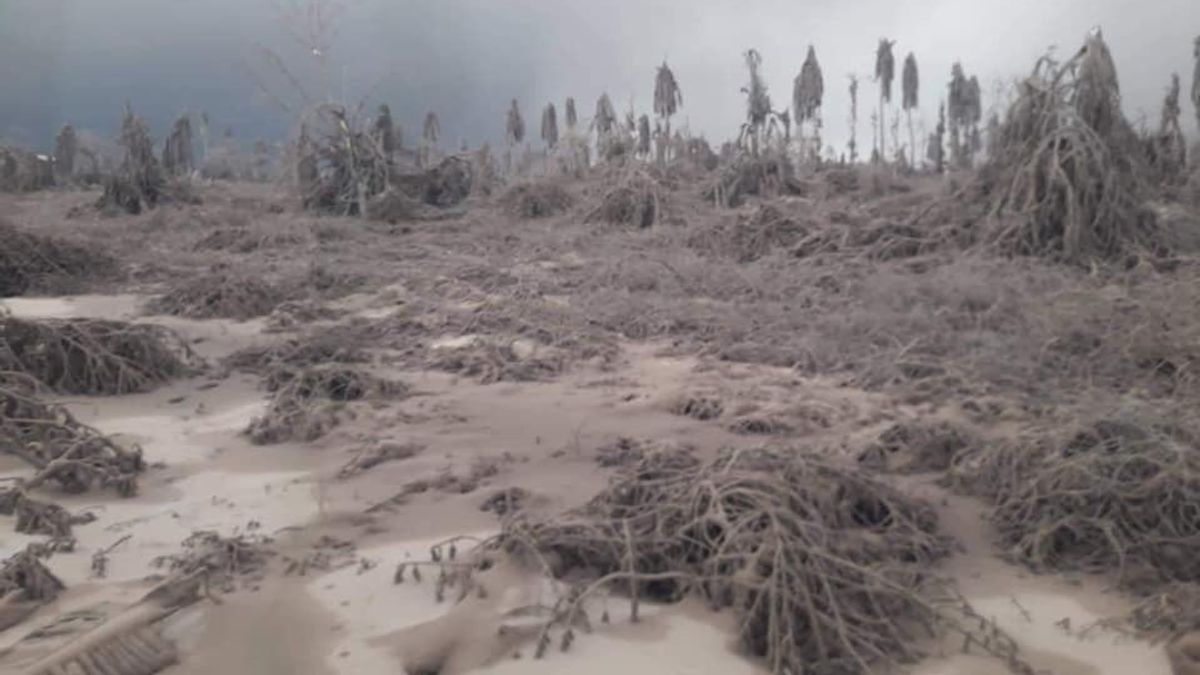JAKARTA - Mount Taal in the Philippines has continued to spew eruptions and rain of volcanic ash since Sunday, January 12. The local government moved fast. Immediately evacuate residents who live around Mount Taal to a safer place.
Quoted from CNN, Monday, January 13, Mount Taal, which is on the island of Luzon, or 60 kilometers south of Manila, is the most active volcano. Since yesterday, Mount Taal has erupted and spewed its volcanic ash.
The thick ash cloud mixed with the rain produced a thick black mud that blanketed the surrounding cities. The return of volcanic ash also forced runways and government offices to close.
Lava fountain from Taal Volcano Main Crater @ 3:20AM pic.twitter.com/YmLaMJU1vQ
- PHIVOLCS-DOST (@phivolcs_dost) January 12, 2020
Authorities also issued a 'Volcanic Tsunami' warning triggered by the falling boulders from the eruption of Mount Taal. This triggers waves that directly hit settlements on the coast.
Communities were also warned that the small island where the volcano is located is a "permanent danger zone", with many fishing villages. At least 25 million Filipinos live within a 100 kilometer radius of Mount Taal.
The spread of volcanic ash has also reached the city of Quezon, which is north of Manila. This prompted the suspension of all flights at Manila's international airport. Although volcanic ash is not poisonous, very fine volcanic ash can pollute the air and respiration if inhaled.
Inside the Taal Volcano Main Crater taken on January 12, 2020. The eruption was captured by PHIVOLCS IP camera at 5-minute interval from 1 PM to 3 PM. #HandaAngMayAlam #TaalVolcano # TaalEruption2020 pic.twitter.com/kA2HZ4aYQs
- PHIVOLCS-DOST (@phivolcs_dost) January 12, 2020
Judging from its history, Mount Taal erupted violently before in 1754 which lasted for six months. The second most active mountain in the Philippines then erupted again and claimed 1,335 lives in 1911. Mount Taal erupted again in 1965, killing 190 people and continuing to experience four minor eruptions in the decades since then.
Mariton Bornas, head of volcanic monitoring of the Philippine Institute of Volcanology and Seismology (Phivolcs), said that the agency had monitored the tremors at Taal Mountain in early March 2019. However, the volcano's activity was significantly active until the rapid eruption on Sunday 12 January 2020.
"The Taal volcano entered into a vigorous active period ... developing into a magmatic eruption at 2:49 a.m. to 4:28 a.m. ... this was marked by a light lava vomit accompanied by thunder and flashes of lightning," said the Philippine Institute of Volcanology and Seismology ( Phivolcs) said in a statement. Phivolcs has now increased the alert level from 3 to 4, from a maximum of 5.
[Luzon Island, Philippines] Taal Volcano eruption seen via Himawari-8 IR satellite imagery #TaalVolcano pic.twitter.com/ND1CXniSUb
- NWS OPC (@NWSOPC) January 12, 2020
Philippine aviation authorities have also advised pilots to avoid flying certain distances from the volcano because of the volcanic ash and ballistic fragments from the eruption dangerous to aircraft.
The English, Chinese, Japanese, Arabic, and French versions are automatically generated by the AI. So there may still be inaccuracies in translating, please always see Indonesian as our main language. (system supported by DigitalSiber.id)













